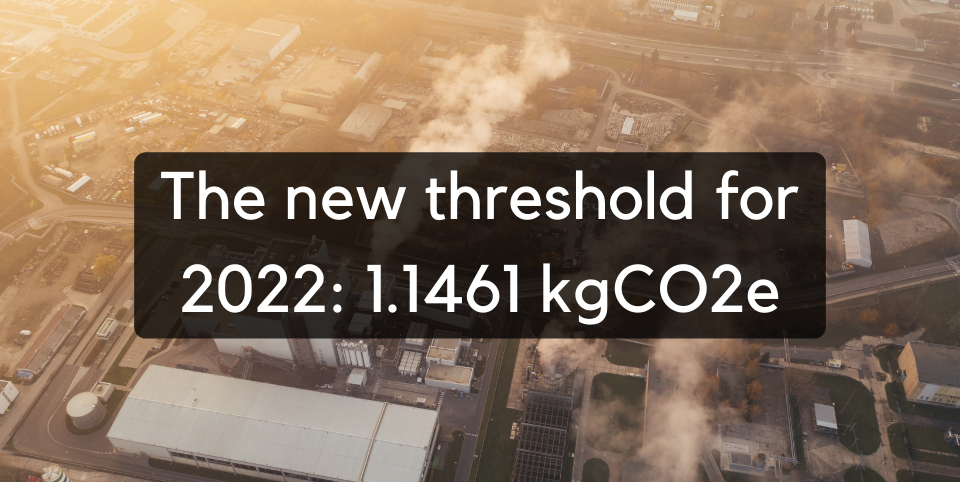Lighter Foodprint’s New Low Threshold
New threshold for 2022: 1.1461 kgCO2e
Why? What spurred the decision?
Previously, our low threshold of 2.69kgCO2e was based on the average North American diet, and the recommended individual reductions we need to make by the World Resources Institute in their Cool Food Pledge. The WRI Cool Food Pledge helps dining facilities reduce food-related GHG emissions by 25% by 2030 (and by 38% per calorie), relative to a 2015 base year—a level of ambition in line with the goals of the Paris climate agreement (Waite et al. 2019). According to WRI, the average food-related GHG emissions per person per day in North America is 28.95kgCO2e (Identifying Cool Food Meals, 2020, pg 1-4). Using their reduction target, the total ‘allowable’ food-related GHG emissions per person per day in North America is 17.95kgCO2e. Making the assumption that lunch and dinner contribute to 30% of our daily food intake, this leads to daily allowable per meal of 5.385kgCO2e. We decided our low threshold to be 50% less than the total allowable per meal, which is 2.69kgCO2e.
After comparing our threshold to other organizations with climate labelling systems, we realized that our low threshold of 2.69kgCO2e was too high to contribute to meaningful ghg emissions reductions related to food. Other organisations had much lower thresholds for what meals are considered “low” emissions. See table here.
How did we arrive at our number? What is the methodology or logic behind it? Why are we amortising it?
We calculated food emissions as a percentage of Canada’s total yearly emissions (which equals 7.17%) by standardising our data from Canada’s 40-45% emissions reduction goals based on 2005 levels by 2030, and food emissions per person per day in Canada for 2015 which is 3.98kgCO2e. These are the low thresholds we came up with per MEAL (30% of daily intake):
- 2005 Food Emissions per Person per MEAL Target (45%): 0.7433 Kg CO2 Emissions
- 2005 Food Emissions per Person per MEAL Target (40%): 0.8108 Kg CO2 Emissions
Although these thresholds are still higher than the low threshold of other organisations we have found, they are ambitious for the emissions of meals at most restaurants. To make choosing low emission meals appear less daunting to the average customer, we decided to pro-rate/amortise the 40-45% reduction by 2030, which gives a different threshold every year (see table here).
While this may cause confusion amongst food service staff and customers, as the low certification would likely have to be removed from certain meals if they no longer meet the new, lower yearly threshold, it makes the low threshold more “achievable” starting now in 2022. We decided to settle on the 40% emissions reduction goal, which is slightly less ambitious but may seem more achievable to the average customer.
Our logic behind this is that industry trends have been showing movement towards plant-based options, and that they will become increasingly popular in restaurants in the long-term. The state of the climate and ecological crisis we are in can simply no longer support our current eating habits and food system.
